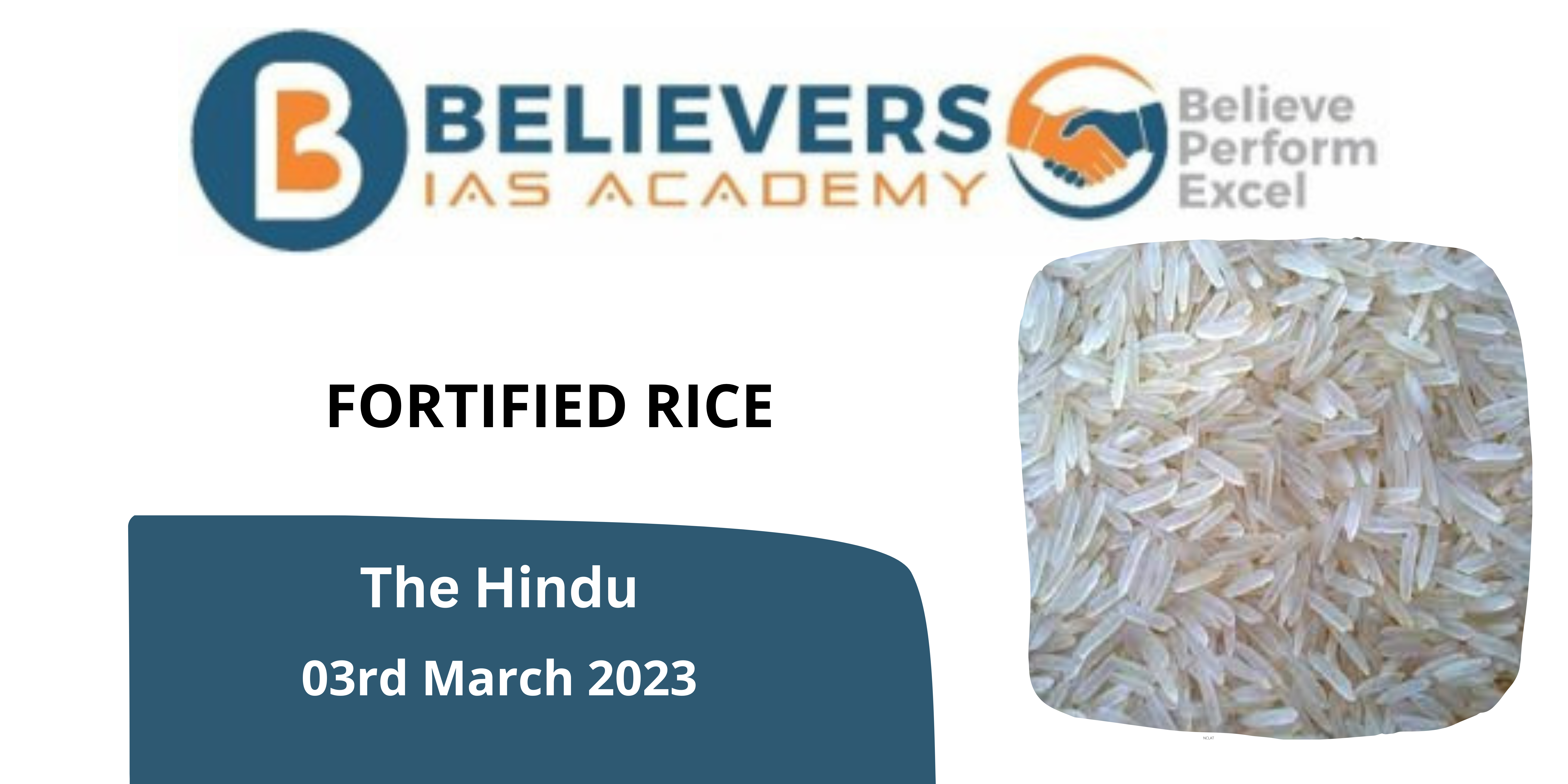FORTIFIED RICE
Prelims Specific Topic
Government efforts in this direction include:
- For supply and distribution, the Food Corporation of India and state agencies have already purchased 88.65 LMT (lakh tonnes) of fortified rice.
- In 2019, the government approved a three-year, centrally supported pilot scheme for rice fortification that would begin in 2019-2020. The programme is currently being implemented in 15 districts throughout 15 states.
- Prime Minister Narendra Modi promised in his Independence Day speech in 2020 that by 2024, all rice distributed under government programmes will be fortified to combat malnutrition.
- Last year, the government increased fortified rice distribution across anganwadis as part of the Integrated Child Development Scheme (now dubbed Saksham anganwadi and Poshan 2.0), as well as a school-based mid-day meal programme (renamed as PM Poshan).
Concerns:
- However, public health professionals have expressed reservations about rice fortification as a means of combating malnutrition, arguing that diet diversification is more important.
- Many people also believe that iron-fortified rice, together with ongoing government iron-supplementation programmes, can lead to an excessive intake of iron, increasing the risk of diabetes, hypertension, and high cholesterol.
Rice fortification is required:
- Malnutrition is prevalent among women and children in the country.
- Every second woman in the country is anaemic, and every third child is stunted, according to the Food Ministry.
- On the Global Hunger Index, India ranks 94th out of 107 countries and is classified as having “severe hunger” (GHI).
- Malnutrition and a lack of key nutrients are important roadblocks in the development of disadvantaged mothers and children.
What is the definition of food fortification:
- The practise of adding vitamins and minerals to regularly consumed foods during processing to boost their nutritional value is known as food fortification.
- Fortification is defined by the Food Safety and Standards Authority of India (FSSAI) as “deliberately enhancing the content of critical micronutrients in a food to improve nutritional quality and give public health benefit with little risk to health.”
Rice with added nutrients:
- Rice fortification, according to the Food Ministry, is a cost-effective and complementary technique for increasing vitamin and mineral content in diets.
- 1 kg fortified rice will contain iron (28 mg-42.5 mg), folic acid (75-125 microgram), and Vitamin B-12, according to FSSAI standards (0.75-1.25 microgram).
- In addition, rice can be fortified with micronutrients such as zinc (10 mg-15 mg), Vitamin A (500-750 microgram RE), Vitamin B1 (1 mg-1.5 mg), Vitamin B2 (1.25 mg-1.75 mg), Vitamin B3 (12.5 mg-20 mg), and Vitamin B6 (1.5 mg-2.5 mg) per kilogramme, either separately or in combination.
What are some of the advantages of fortification:
- Because the nutrients are added to commonly consumed staple meals, this is a wonderful way to enhance the health of a broad segment of the population at once.
- Fortification is a safe way to improve people’s nutrition. People’s health is not jeopardised by the addition of micronutrients to diet.
- It does not necessitate any modifications in people’s eating habits or patterns. It is a socially and culturally appropriate method of nutrient delivery.
- It has no effect on the food’s properties, such as taste, texture, or appearance.
- It can be adopted rapidly and show effects in terms of improved health in a short amount of time.
- This strategy is cost-effective, especially when current technology and distribution platforms are utilised.
Source The Hindu

